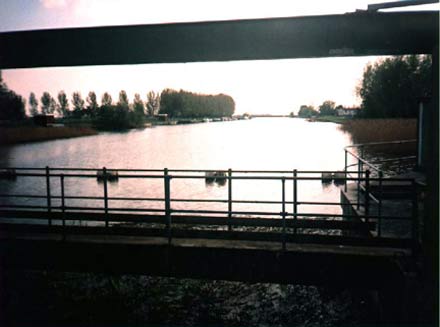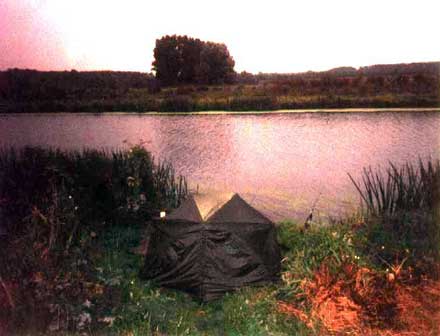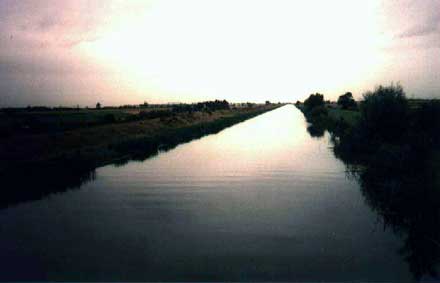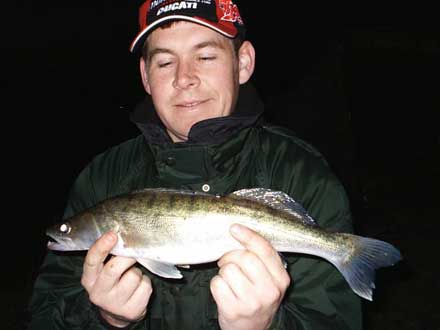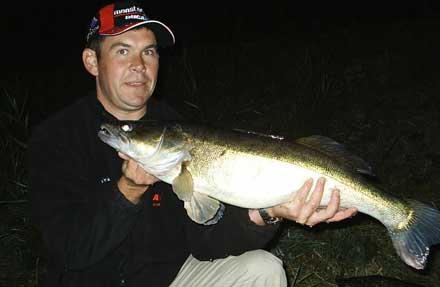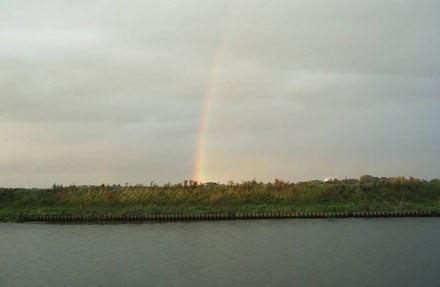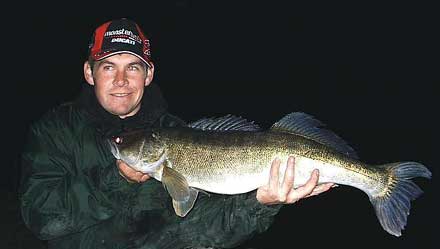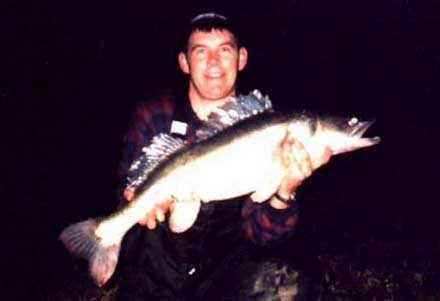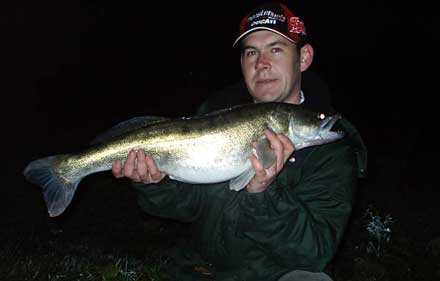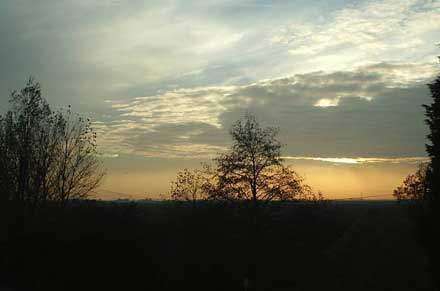The Great Ouse is the major water course in East Anglia, with some 150 miles or so of water running through Bedford, St Neots, Godmanchester, Huntingdon, St Ives, Ely and Littleport before emptying into the Wash at Kings Lynn. Its tributaries include the River Cam, River Lark, River Little Ouse and the River Wissey, in its lower reaches there are stretches known as the Ely Ouse, Old West River and Ten Mile Bank.
Zander first appeared in the river shortly after their introduction to the Relief Channel way back in March 1963. As has been well documented in the past, once in the River Ouse, the zander spread was a much, much quicker development than had ever taken place in much of the drainage system they had started to populate. Once again, as documented in Barrie Rickards’ and Neville Fickling’s superb book ‘zander’, for anyone who knows the Ouse, this will hold no surprises, as the Ouse has always held far fewer obstacles to hamper the movements of such a fish. By the late 60’s zander were present in good numbers all the way upstream to Ely with specimens also having been taken from as far upstream as St Ives. The picture today as far as zander presence goes, is one of huge consolidation. Zander are now present in good numbers along a massive length of the Ouse, almost all the way from Denver to Bedford. I have fished the Ouse for a good few years now and of course have my own favourite areas, but I hope through this article, to highlight some of the excellent zander fishing that can be found on the lower Great Ouse. Despite having produced some extremely large specimen zander over the years, I do think it is fair to say that the Ouse has at times endured somewhat of a reputation as a ‘Schoolie’ water (schoolies: small zander that swim in shoals or schools). In my opinion this label hasn’t entirely been a bad thing. Whilst the ‘Circus’ have continued to chase individual fish on some of the more pedigree waters, the Ouse has, to a certain degree, been left to its own devices. Yet despite this, the Ouse has not only continued to produce some excellent catches of zander, it has also probably produced as many, if not more, 15lb-plus specimens over the last five years or so as any individual venue in the country. For the average zander angler visiting the lower Great Ouse, a double figure fish is now a very realistic prospect indeed.
On a river averaging some fifty metres wide, with depths ranging from ten to twenty five feet, with fairly few features such as overhanging trees and bridges, where would be the ideal place to start a campaign? My fishing experiences of the lower stretch of the river between Ely and Denver have caused me to dissect it. I have categorised it into two distinct stretches, one being known to me as the ‘Ely’ stretch, the other being somewhat more fondly nicknamed the ‘Ten Mile Blank’ stretch. Of course this being a mick take of its true name, Ten Mile Bank. The reason I have dissected the river is due to the very different nature of its course between the two stretches. This of course means that slightly different tactics have to be employed in order to catch its inhabitants. The Ely stretch tends to be very straight with depths of 12 – 14 feet whereas downstream of Littleport, the river holds a lot more character with many series of bends and wide ranging depths plunging from 12 – 25 feet in places. For those of you still wondering where the nickname of Ten Mile Blank came from, all will become apparent.
THE ELY STRETCH A popular area with zander specialists, the Ely Stretch of the Gt Ouse does indeed have a lot going for it. The river here is extremely straight although there are a number of features, which include a large factory, a couple of bridges and an outfall. Of course in addition to these features there are marginal and far side ledges, approximately 3 – 4 deep, which then drop off into a good 12 – 14 foot of water. In the warmer weather, the ledges are home to extensive beds of cabbage weeds that don’t recede until the first few frosts appear. There is also widespread growth of reed beds along the length. During the warmer weather, there are also vast clusters of lilies, these provide excellent cover for the fry which appear at the start of each summer. Generally the water clarity is very good, in fact on occasion you can see the bottom of the inside ledge via your headtorch at night when returning a zander! Once the first few floods have ravaged the river, the water clarity is dramatically reduced. The zander populations are high in this stretch of river. In fact they are present in good numbers from all sizes from immature fish right up to mid double figures.
I find the river fishes well from the start of the season right through to the first few frosts when things become a little harder and location becomes the key. The fish can be very mobile at times, yet at other times you can land on them and use a complete stash of baits in next to no time at all. Whatever happens, it’s a stretch of river on which you’ll rarely blank, providing conditions aren’t too poor! The size of the zander in the Ely area is an interesting subject. They definitely seem to have come on in size over the last few years. I found the 2000 and 2001 seasons not to have been as productive as past years, where numbers of zander were concerned. In my tiny mind, I saw this as part of a growing cycle, of course some of the semi-resident shoals of zander were thinning out a bit as they reached older age. This has been borne out by the number of larger zander that have appeared over the last few years. I hadn’t seen a double from this stretch until 2002, in a few short months I witnessed four different doubles including an 11 pounder to myself and a near 12 pounder to a friend. Indeed, during September last year, in addition to a fair few smaller samples, I landed five zander over 9lb to just under double figures in about 8 trips. Pike are present in good numbers too and whilst I could never call myself an out and out piker, I’ve certainly had some good fun catching them to high double figures from this stretch of the river. They often appear during the afternoon when the zander fishing has quietened and as with most river pike, they generally fight like fury! Ideal times to catch the zander on this stretch can change from year to year. In fact the first season I fished it, all of the Pike came during darkness, with the zander feeding very hard from first light until early afternoon. Work that one out! After a good few seasons on the water, I now rate dusk very highly for a run or two. After this runs can generally occur sporadically throughout the night, dawn is also a good time for a run or two. Of course my thoughts on this are based upon conditions being half decent, not too cold with perhaps a nice mild wind rippling the surface. That said, the most manic night I’ve ever had on the Ely Ouse, was during a violent thunderstorm which occurred one dark evening during October 98. In the hour or so the thunderstorm raged, I landed 8 zander to 7lbs or so and missed about another 5 runs. After the storm passed, the runs stopped as quickly as they started. I was completely soaked and retired to the bivvy having pulled the rods in. I awoke a couple of hours later and recast, having changed into some spare dry clothes. The night had turned from an overcast event, complete with rolling cloud and a mild breeze. It had turned into a clear night, one that had also had turned quite chilly, the bright stars looking like a million small punctures in the dark blanket covering the roof of the universe. Still, during the last few hours of darkness I managed another few runs and landed another four zander to 7lb 8oz. The key to the fantastic fishing was, in my view, the freak conditions. I don’t like heavy persistent rain, yet I have done well during the odd thunderstorm.
To summarise, the Ely Ouse is a very good area to fish, in fact with its easy banks and good access, the novice should find it very hospitable indeed. There are plenty of zander to fish for and a very good chance of a 9lb-plus fish, which is after all, a Zed which should warm the cockles of any zander specialist. Day tickets can be purchased on the bank for a few quid and I’ve found the bailiff, John Powell, to be very pro zander indeed. There is plenty of water to go at and plenty of room to get in. The only areas I’d actually avoid are the more obvious features such as the outfall or the bridges, which to tend to get a bit of a hammering. TEN MILE BLANK! Downstream of Littleport, the river takes on a slightly different character. There are numerous sweeping bends and the depths plummet to almost twice the depths of the Ely beat. The access isn’t quite so good and the fishing starts to become more difficult. The further you go towards Denver, the deeper and wider the river becomes, you are now entering big zander country. Undoubtedly, the closer you go to Denver from Ely, the bigger the zander seem to be. Unfortunately though, with added quality, quite often comes a slight degradation in quantity. Essentially the river is the same, extensive clusters of lily pads and reed beds adorning the near and far banks. The shelves maybe a little wider and a little deeper, but still they give shelter to the numerous cabbage patches, of course many of which hide yearling jack pike waiting to ambush any small fry which may swim past. There is also, in my opinion, a much more relaxed air to the atmosphere once in deepest darkest Ten Mile Blank..
Within the first few weeks of moving my fishing to the Fens in search of the much coveted zander I drove down the road near Denver and thoroughly enjoyed a good old recce of Ten Mile Blank. In fact, I looked the lower reaches over in great detail long before I ever settled near Ely! Why didn’t I fish it? Quite simple really, because in those days, there wasn’t too much written in the weeklies, or even the ZAC (Zander Angling Club) magazine that recommended it. When you combine this with a lack of experience and hence low confidence levels, the answer becomes starkly apparent. I wish I had if I am honest, the lower river is a whole lot easier to fish than a lot of the drains I had been plugging away on. There just seemed to be a little apathy towards the zander on the stretch. Of course the odd matchman would tell you of captures of double figure fish, most often caught on double maggot or a similar bait. Yet, there just didn’t seem to be anyone ever zander fishing on it. I put it to the back of my mind. In fact I didn’t start to hear of any decent zander fishing on Ten Mile Blank until around about summer 98. The source of the hot information being a friend of a friend who’d struggled on the drains and was leaking the fact that he had found a ‘sure thing’! As usual, I was the last to tag onto the water. I unfortunately spend a lot of time away from the area with work. This has meant that over the years I have had to plan my zander angling around the few weeks in the year I manage to get away from my toil. Alas my fondness for fishing such waters as the Twenty Foot river, where I was happy to get a run or two and had a justified hope for an encounter with the odd double, kept me away from Ten Mile Blank proper. In fact it wasn’t until late 2002 I managed to put a sustained campaign into action. Of course, I had fished a fair few sessions in the area, mainly the odd one nighter here and there and had caught zander. Yet I felt that this water, with potentially a much lower head of Zeds and of a much larger size would be well worth a large scale effort. With little in the way of trepidation, I descended on the area in October 2002. Having seen pictures appearing in the weeklies for a couple of years by this time and still not seeing the circus all over the place, surely it wouldn’t be long before I bagged a biggie?
The first lesson I learned was not to worry too much about targeting exact swims and area’s. I believe if we are honest, everyone would like a result for as little effort as possible – and why not! Less effort ultimately means fewer trips and the fallout from this is lower expense. Yet at the time with a PB of 12lb 3oz I do admit, it was very, very difficult indeed, not to be drawn to the exact swims appearing in the weeklies. After all, there were fish to 16lb 15oz being taken and to top it all, I was getting a little inside information too! A very difficult lesson to learn indeed, yet one I felt that would move the boundaries a little, with regards to my angling tactics. During winter time 2002 I recorded no less than 16 blanks, the water was generally like chocolate, flowing like the Ebro and extremely cold. Although I wasn’t as daft or even inexperienced enough not to know that the conditions were atrocious for zander angling, fish were still appearing here and there on the stretch. I was extremely loath to pack it all in, just in case I missed a trick. I fished nights and double nights the whole way through November into February for not a single zander. I didn’t look upon this as entirely the worst thing that could have happened, to be fair and a tad optimistic, I’d hammered the more well known swims and at least I now knew the area extremely well, right down to depths and the flow characteristics. I’d met and talked to a fair few anglers in the area and even a thick-skinned nugget such as I, was beginning to get a bit of a clue! Yep, it was time to move on and explore pastures new. The only thing that hampered my enthusiasm rather unluckily happened to be the closed season. Still, an 11lb Zed from my Ely beat with 3hrs of the old season to go provided me with a little reward for my efforts. I simply couldn’t wait for the new season to arrive.
The new season arrived and straight away I was into a few zander on a drain or two I’d been looking forward to fishing. I had decided to give the Gt Ouse until September and then have a crack. A thought had been forming within my somewhat tiny mind for some a fair old while, it’s the river bends that hold the fish. Of course that makes it all sound so easy, lets just head to a bend in the river! Yet undoubtedly they do, loads of the excruciatingly large zander reported, seemed to come from such spots. For sure in most cases, anglers catching these large Zeds put in many, many rod hours but the fact remains, that specimen sized Zeds love the bends. This was proved in part to me when out fishing with friends late September. I managed a beauty of 10lb 10oz from a section of the river I’d never previously fished. I’ve subsequently found out the area became quite famous in the 70’s after producing a 30lb Pike to a famous Pike angler. Yes, it’s located right in the middle of a series of kinks in the rivers course. Further evidence was produced about three weeks later as I landed a superb personal best weighing 13lbs and 11oz.
This season my time has been a lot more restricted and I’ve only been able to snatch a couple of weeks fishing. I’ve found a new area to exploit, a short stretch of the river well downstream and right in the middle of a series of bends. The water is nearly 20ft deep a rod length out, the river 50m wide and totally, totally, in the middle of nowhere. As I’ve mentioned earlier on, its not the sort of area in which I’d expect 8 or 9 runs a night, yet so far the results are quite encouraging. I’ve had a good number of zander including 7’s, 8’s and a couple of 9’s and as if to confirm my faith in such areas, a friend managed a belter of 11lb 12oz whilst accompanying me. Despite the monsters that seem to appear on almost a weekly basis in the press, large single figure zander approaching the magic 10lb, are indeed superb fish, they are truly fish that any angler should be very happy to capture.
To bring my prattling to an end and tie this piece up, in summary, the Great Ouse is a great river to fish and holds many fish of all sizes. I personally believe it has the potential to produce a zander, the calibre of which, dreams are made. The prey fish have made an incredible comeback over the last few years, a waggler rod and some maggots can usually see a nice little catch of roach, skimmers and perch. This can only mean that the zander are extremely well fed and putting on weight. Of course, the Status quo of life means that the ups have to be accompanied by downs and in this case it means that portly zander can be a little bit more difficult to catch. Unless you dust off the gear and have a bash you’ll never know. Why not purchase a map of the Ouse, find yourself a secluded area, and spend a night or two after what must rate as a fantastic quarry. |
Welcome!Log into your account










